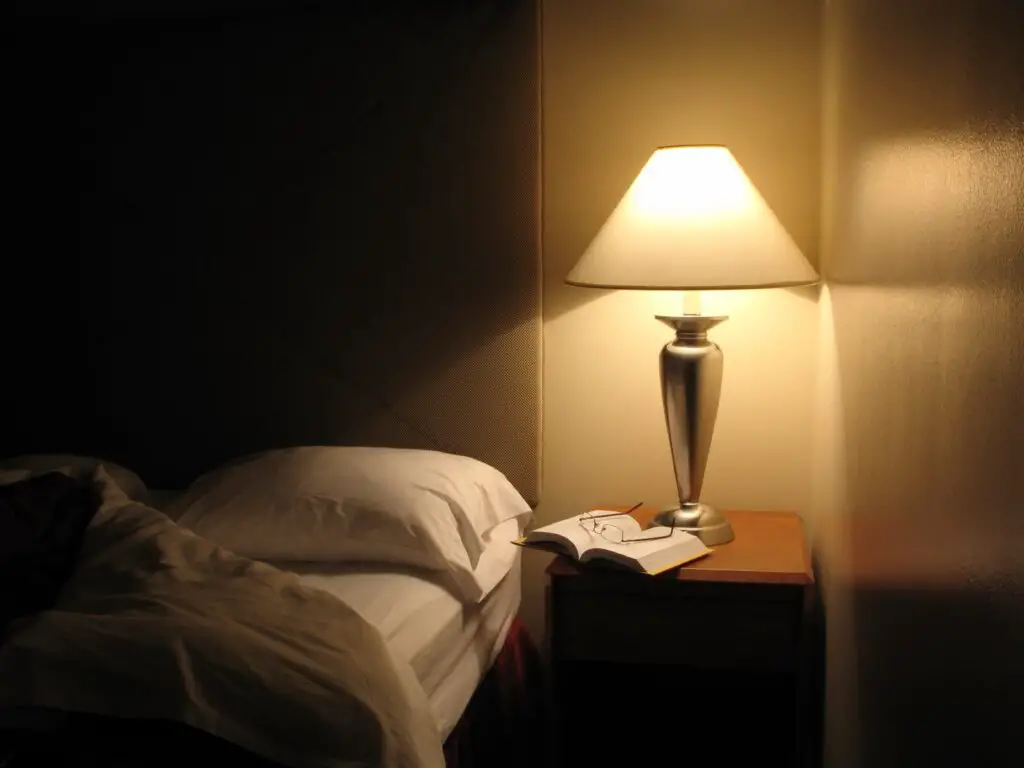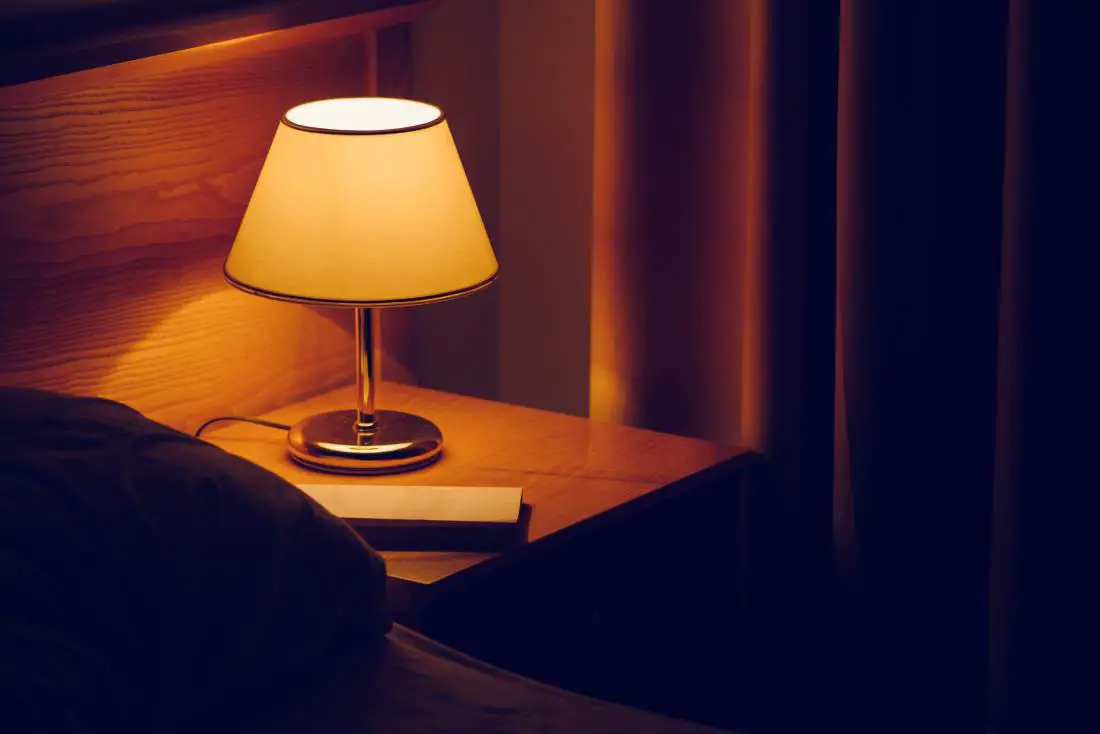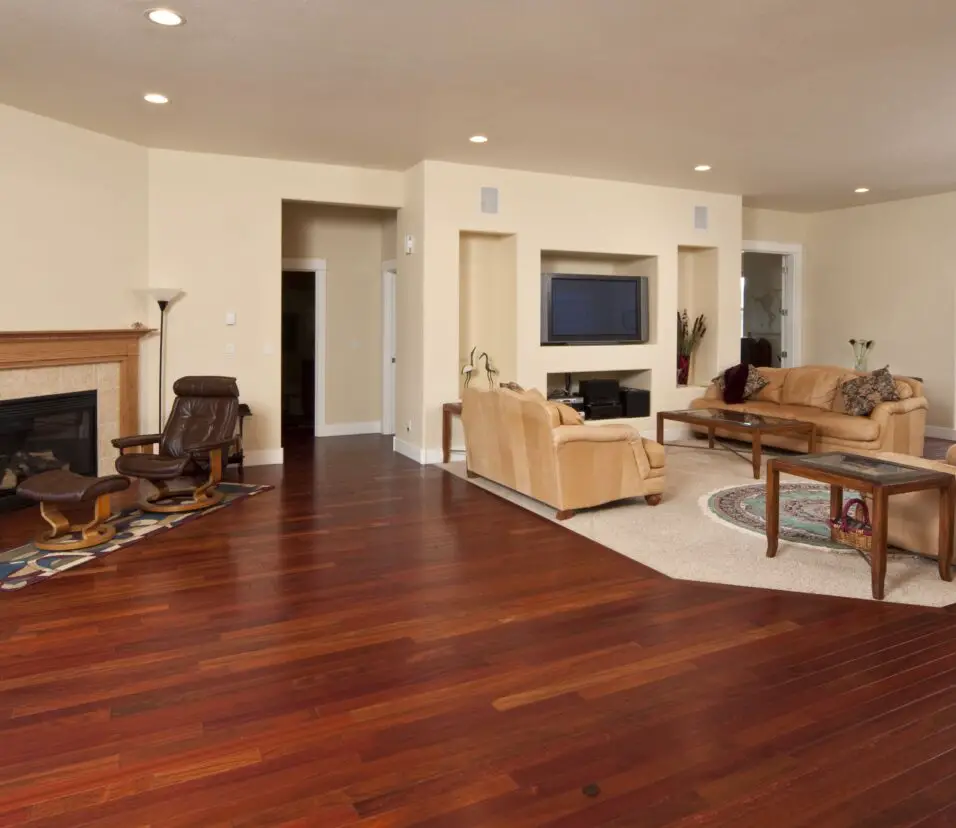Why Should The Light Be Dimmed When Looking At Living
Introduction
Why Should The Light Be Dimmed When Looking At Living: Dimming the lights when looking at living organisms or natural environments can have significant benefits, both for the observer and the subject of observation. This practice, often employed in various contexts, serves to create a more conducive and respectful environment for observing living organisms, whether they are animals, plants, or insects. In the natural world, countless species of animals and plants are often most active during specific times of the day or night. This natural rhythm, known as circadian rhythms, influences their behavior, feeding patterns, and overall well-being. Observing these creatures in their natural habitat without disturbing their natural activities can provide valuable insights into their biology and ecology.
Beyond these practical considerations, dimming the lights also fosters a sense of mindfulness and respect for the environment. It encourages observers to take a more thoughtful and considerate approach to their interactions with living organisms and their habitats. By reducing the intrusion of artificial light, we can immerse ourselves in the world of these organisms without imposing undue stress or interference.
In this exploration, we will delve deeper into why dimming the living lights when observing living organisms is essential. We will consider its ecological and ethical implications, its benefits for scientific research and observation, and its role in fostering a greater appreciation for the natural world. Ultimately, dimming the lights serves as a simple yet impactful way to harmonize our presence with the living organisms that share our planet.

Why should the light be dimmed?
However, this actually carries with it a host of less obvious but equally favourable benefits such as reduced energy consumption and improved longevity – the longer your light bulbs are dimmed, the less energy they use and the longer they last.
Dimming the lights serves multiple purposes, ranging from enhancing ambiance to conserving energy and improving sleep quality. Here are some key reasons why dimming the lights is a beneficial practice:
Ambiance and Mood Enhancement:
Dimming the lights can instantly create a warm and inviting atmosphere. It softens the harshness of bright lighting, making a space feel cozy, intimate, and relaxed. This is especially useful for setting the mood during romantic dinners, cozy evenings, or social gatherings.
Energy Conservation:
Dimming lights reduces the amount of electricity consumed. When lights are dimmed, they draw less power, contributing to energy efficiency. This not only saves you money on energy bills but also reduces your environmental footprint by lowering greenhouse gas emissions associated with electricity generation.
Visual Comfort:
Harsh, bright lighting can cause discomfort and glare, particularly in the evening or at night. Dimming the lights reduces glare, making it easier on the eyes and enhancing visual comfort. It can also help prevent eye strain and headaches.
Promotion of Sleep:
Dimming the lights in the evening signals to your body that it’s time to wind down and prepare for sleep. This practice helps stimulate the production of melatonin, a hormone that regulates sleep. By promoting the release of melatonin, dimmed lights can lead to better sleep quality and help you fall asleep more easily.
Preservation of Night Vision:
In outdoor settings, dimming lights is essential for preserving night vision. Excessive artificial lighting can hinder your ability to see in low-light conditions and disrupt the nocturnal activities of wildlife. Dimmed outdoor lighting is less disruptive and helps maintain a natural nighttime environment.
Customized Lighting:
Dimmer switches provide the flexibility to adjust the brightness of lighting according to your specific needs and preferences. Whether you need bright lighting for reading, task-oriented work, or a more subdued ambiance for relaxation, dimmers allow you to customize the lighting to suit your current activities.
Extended Bulb Life:
Dimming lights can extend the lifespan of certain types of bulbs. When bulbs are dimmed, they generate less heat, which is a common factor contributing to the degradation of filaments in incandescent bulbs. Dimming can help increase the longevity of bulbs and reduce the frequency of replacements.
In summary, dimming the lights offers a range of benefits, from creating a pleasant atmosphere and conserving energy to improving comfort and promoting better sleep. It is a simple and effective way to enhance your living space and minimize the environmental impact of excessive lighting.
Why do you dim lights at night?
Intense light at night interferes with your body clock.
Hence, regularly exposing oneself to electrical lighting in the late evening disrupts melatonin signalling and could therefore potentially impact sleep, thermoregulation, blood pressure, and glucose homeostasis.
Dimming lights at night serves several essential purposes, primarily related to promoting sleep, comfort, and energy conservation:
Sleep Preparation:
Our bodies have a natural sleep-wake cycle regulated by circadian rhythms. Exposure to bright, artificial light, especially in the evening and nighttime hours, can disrupt this cycle. Dimming the lights at night helps signal to our bodies that it’s time to wind down and prepare for sleep. This practice aligns with our natural sleep patterns, making it easier to fall asleep and enjoy better sleep quality.
Melatonin Production:
Exposure to bright light at night suppresses the production of melatonin, a hormone that promotes sleep. Dimming the lights helps stimulate melatonin production, aiding in the onset of sleep and contributing to a more restful night’s rest.
Reduced Glare and Discomfort:
Bright lighting at night can cause discomfort and glare, particularly when you’re trying to relax or sleep. Dimming the lights reduces glare and creates a softer, more soothing environment, enhancing visual comfort.
Preservation of Night Vision:
When you dim the lights at night, you preserve your night vision, allowing your eyes to adapt to low-light conditions more effectively. This is particularly important when navigating in the dark or stargazing, as excessive artificial lighting can hinder your ability to see in low-light environments.
Energy Conservation:
Dimming lights at night is an energy-saving practice. When lights are dimmed, they draw less electricity, resulting in lower energy consumption. This not only reduces your energy bills but also contributes to overall energy efficiency and environmental sustainability.
Customized Lighting:
Dimmer switches provide the flexibility to adjust lighting according to your specific needs and activities at night. Whether you need brighter light for reading or task-oriented work or softer lighting for relaxation, dimmers allow you to customize the lighting to suit your preferences.
In summary, dimming lights at night helps facilitate the transition to a more restful and sleep-conducive state, reduces discomfort and glare, preserves night vision, conserves energy, and provides the flexibility to create a personalized nighttime environment. This practice aligns with our natural sleep patterns and contributes to a more comfortable and eco-friendly nighttime experience.
What happens when a light is dimmed?
Dimming means reducing the output of a lamp or lighting fixture. The output of a lamp or lighting fixture is measured in lumens (lm) and is sometimes known as its “luminous flux”. As a lamp or fixture is dimmed its lumen output decreases.
Dimming a light reduces its brightness by adjusting the flow of electricity to the light source, typically using a dimmer switch. When a light is dimmed:
Less Electricity: Dimming reduces the electrical current flowing to the light bulb or fixture, causing it to emit less light. This reduces energy consumption and prolongs the life of the bulb.
Visual Comfort: Dimming softens the intensity of the light, making it less harsh on the eyes and reducing glare.
Ambiance: Dimmed lights create a warm and inviting atmosphere, perfect for relaxation, romantic settings, or creating a cozy environment.
Energy Savings: Dimming lights can significantly reduce energy consumption, making it an eco-friendly practice.
Where you should use dim lights?
If you are driving with your high-beam lights on, you must dim them at least 500 ft from any oncoming vehicle, so you don’t blind the oncoming driver. You must use low-beam lights if you are within 200-300 ft of the vehicle you are following. Consult your state’s Drivers Handbook for details.
Dim lights can be used in various settings to enhance comfort, ambiance, and energy efficiency:
Homes: Dim lights in living rooms, dining areas, and bedrooms to create a relaxing atmosphere and save energy.
Restaurants: Dimmed lighting sets the mood for intimate dinners and enhances the dining experience.
Hotels: Many hotels use dim lighting in guest rooms to create a cozy and inviting atmosphere.
Theaters and Cinemas: Dim lights focus attention on the stage or screen, enhancing the visual experience.
Bedrooms: Dim lights in the bedroom before sleep to promote relaxation and better sleep quality.
Outdoor Lighting: Install outdoor dimmers to reduce light pollution and create a subdued nighttime ambiance.
In summary, dimming lights is a versatile practice with benefits for comfort, ambiance, energy conservation, and sleep quality. It is applicable in various settings where creating the right atmosphere is essential.
When should I dim the lights at night?
That’s why we recommend dimming the lights as you unwind in the evening and turning off screens (phones, tablets, televisions, and laptops) at least one hour before your usual bedtime.
Dimming the lights at night is recommended in the hours leading up to bedtime to help signal to your body that it’s time to wind down and prepare for sleep. The ideal time to start dimming lights varies from person to person but typically begins around 1-2 hours before you plan to go to sleep. This practice aligns with our natural circadian rhythms, which respond to changes in lighting conditions.
During this pre-sleep period, you can gradually reduce the intensity of artificial lighting in your home. This can include dimming overhead lights, using table lamps with lower-wattage bulbs, or utilizing smart lighting systems that allow you to adjust the brightness. Dimming the lights during this timeframe helps your body produce melatonin, a hormone that promotes sleep, leading to a more restful and rejuvenating night’s rest.
Does dim light affect sleep?
Dim light in the evening (DLE) imposes an artificial extension of the solar day, increasing our alertness before bedtime, delaying melatonin timing and sleep onset, and increasing sleepiness in the next morning.
Yes, dim light can positively affect sleep. Exposure to bright, artificial light, especially in the evening and nighttime hours, can disrupt sleep patterns and the production of melatonin. Melatonin is crucial for regulating the sleep-wake cycle. When we dim the lights in the hours leading up to bedtime, it sends a signal to our bodies that it’s time to prepare for sleep, leading to several sleep-related benefits:
Melatonin Production: Dim light stimulates the production of melatonin, helping you fall asleep faster and enjoy deeper sleep.
Improved Sleep Quality: A sleep-conducive environment with dimmed lights enhances the overall quality of sleep, leading to more restorative rest.
Reduced Sleep Disturbances: Dim light reduces the chances of sleep disturbances and nighttime awakenings caused by excessive artificial lighting.
Alignment with Circadian Rhythms: Dimming the lights aligns with our natural circadian rhythms, promoting a healthier sleep-wake cycle.
Do dimmed lights use less energy?
Not only do modern light dimmers save you energy, but they also extend the life of your light bulbs! Dimmers use a “Triac Switch” to rapidly turn a light circuit on and off to reduce the energy flowing to a light bulb.
Yes, dimmed lights use less energy compared to full-brightness lighting. Dimming lights reduces the flow of electricity to the light source, causing it to emit less light. The reduction in light output directly correlates with a decrease in energy consumption. Dimming lights is an effective energy-saving practice and offers several benefits:
Energy Efficiency: Dimming reduces electricity consumption, leading to lower energy bills and reduced environmental impact.
Prolonged Bulb Life: Dimming extends the lifespan of light bulbs. Lowering the brightness reduces the heat generated, which can help bulbs last longer.
Customized Lighting: Dimmer switches allow you to adjust the lighting to your specific needs and preferences, reducing energy use when brighter lighting isn’t necessary.
Eco-Friendly: Dimming lights contributes to a more sustainable lifestyle by conserving energy and reducing greenhouse gas emissions associated with electricity generation.
Do dimmed lights last longer?
Light dimmers save energy by reducing the flow of electricity to the bulb and allowing lights to operate with lower power outputs. Since lights under less stress shine longer, dimmers are known to extend the life span of your bulbs, too.
Dimmed lights can potentially last longer than when operated at full brightness, but the actual effect on bulb lifespan depends on various factors, including the type of bulb and the dimming technology used. Here’s how dimming can affect bulb longevity:
Incandescent Bulbs: Dimming incandescent bulbs can extend their lifespan. When dimmed, these bulbs produce less heat, which is a primary factor contributing to their filament’s degradation. Reduced heat production can help incandescent bulbs last longer.
LED Bulbs: Most modern LED bulbs are compatible with dimmer switches. When properly dimmed, LED bulbs can also have an extended lifespan. However, it’s essential to use dimmer switches compatible with LED technology to avoid flickering or other issues that could impact bulb longevity.
Compact Fluorescent Lamps (CFLs): Dimming CFLs can affect bulb longevity differently. CFLs are generally less compatible with dimming compared to LED or incandescent bulbs. Dimming CFLs may lead to shorter lifespans and a limited dimming range.
In summary, dimming lights can potentially prolong the lifespan of incandescent and LED bulbs by reducing heat production and energy consumption. However, the impact on bulb longevity may vary depending on the type of bulb and dimming technology used. To maximize bulb lifespan and energy efficiency, it’s essential to select appropriate bulbs and dimming equipment and use them in accordance with manufacturer recommendations.

Conclusion
Dimming the lights when observing living organisms is not merely a matter of convenience or etiquette; it is a practice rooted in respect, mindfulness, and the promotion of a harmonious coexistence between humans and the natural world. This act of lowering artificial lighting serves multiple purposes that benefit both the observer and the subjects of observation, including animals, plants, and insects.
Dimming the lights also demonstrates a profound commitment to conservation and environmental stewardship. Excessive artificial lighting, especially in natural habitats, can disrupt ecosystems and affect the health of both flora and fauna. By reducing light pollution, we take a step toward preserving the sanctity of these spaces, ensuring that they remain viable for generations to come.
Furthermore, keep dimming the lights fosters a sense of connection and mindfulness. It encourages individuals to immerse themselves in the natural world without imposing themselves upon it. This practice helps us rekindle a deeper appreciation for the intricate beauty and diversity of life on Earth.
In essence, dimming the lights is a small but meaningful gesture that carries significant implications. It underscores our responsibility as stewards of the planet, our dedication to scientific integrity, and our commitment to cultivating a respectful and harmonious relationship with all living organisms. By embracing this practice, we can continue to explore the wonders of the natural world while safeguarding the delicate balance of life that thrives in its diverse ecosystems.








